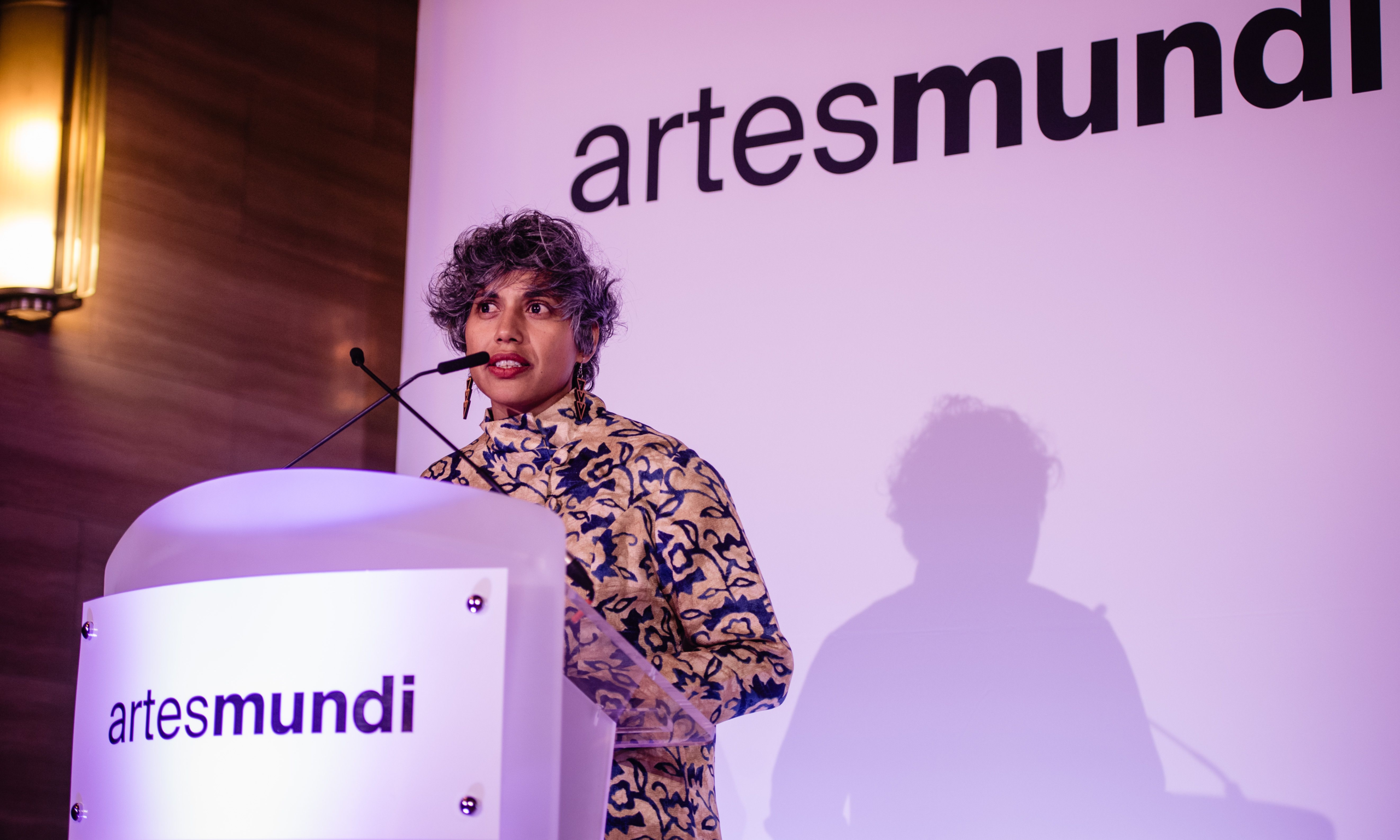For the prize’s tenth edition, Havini showed the four-channel video work, Habitat (2020), at Mostyn gallery in Llandudno
Courtesy Artes Mundi
The artist Taloi Havini, who comes from Bougainville in Papua New Guinea, has won this year’s Artes Mundi £40,000 award, the largest art prize in the UK.
For the prize’s tenth edition, Havini is showing the four-channel video work, Habitat (2020), at Mostyn gallery in Llandudno. Wanda Nanibush, the former curator of Indigenous art at the Art Gallery of Ontario, writes in the accompanying exhibition material that the work is a “visual composition of the experiences of Bougainvilleans with colonialism, mining, resistance and land and water protection, from the 1960s to the present day.”
The work shows a land scarred and bleached by resource extraction after the establishment of a copper mine in Bougainville by the multinational Rio Tinto Group in the 1970s. At Mostyn, Havini also presents a new work, Where the rivers flow, (Panguna, Jaba, Pangara, Konawiru), a series of 40 prints extracted from the artist’s film archives following her journey through Bougainville.
At Chapter arts centre in Cardiff, Havini displays a selection of newly produced photographs from an imaginary line (2018), a series of personal family archive images that the artist has transferred from Kodachrome slides into large digital prints. Three lightboxes, entitled Hyena (day and night), also feature.
Havini is inextricably linked to Bougainville through family ties; her paternal grandfather was, for instance, the late paramount chief of the Naboin clan on Buka Island. So is it difficult to conceive and create works that are so personal and also so political? “I think you can only speak from the personal [viewpoint]; as an artist, you get to be personal but speak to world issues in a nuanced way.
She describes, the fraught political situation in Bougainville, stressing that 97.7% in the region voted for independence from Papua New Guinea in 2019 but the outcome is still unclear. Visiting Wales was a tonic though where she saw the “strength of the culture and the language; the revitalisation of the language is very important and the localisation of stories”.
Meanwhile, Nanibush, the first curator of Canadian and Indigenous art at the AGO, left the institution suddenly last November, a move which shocked the Canadian art world. Her departure was linked to a leaked letter accusing her of “posting inflammatory, inaccurate rants against Israel”.
“People like Wanda are standing up for what they believe in,” Havini says. “The situation in Palestine is heart breaking. Bougainville is a post-conflict society still recovering from a military blockade.”
Asked if the prize means she will now get more exposure, she says: “I’ve never won one so we’ll find out. It is very hard being an artist and celebrating at a time when people are suffering but the award is an encouragement to keep going.”
The other artists shortlisted for this year’s Artes Mundi prize, which has expanded across Wales this year to multiple venues, are Naomi Rincón Gallardo; Carolina Caycedo; Nguyễn Trinh Thi; Mounira Al Solh; Rushdi Anwar and Alia Farid. The Bagri Foundation, a UK charity, is supporting Artes Mundi 10.
Havini is curating an exhibition at TBA21–Academy’s Ocean Space in Venice (Re-Stor(y)ing Oceania, 23 March-13 October), presenting commissions by two Indigenous arts from the Pacific Islands: Latai Taumoepeau and Elisapeta Hinemoa Heta.

